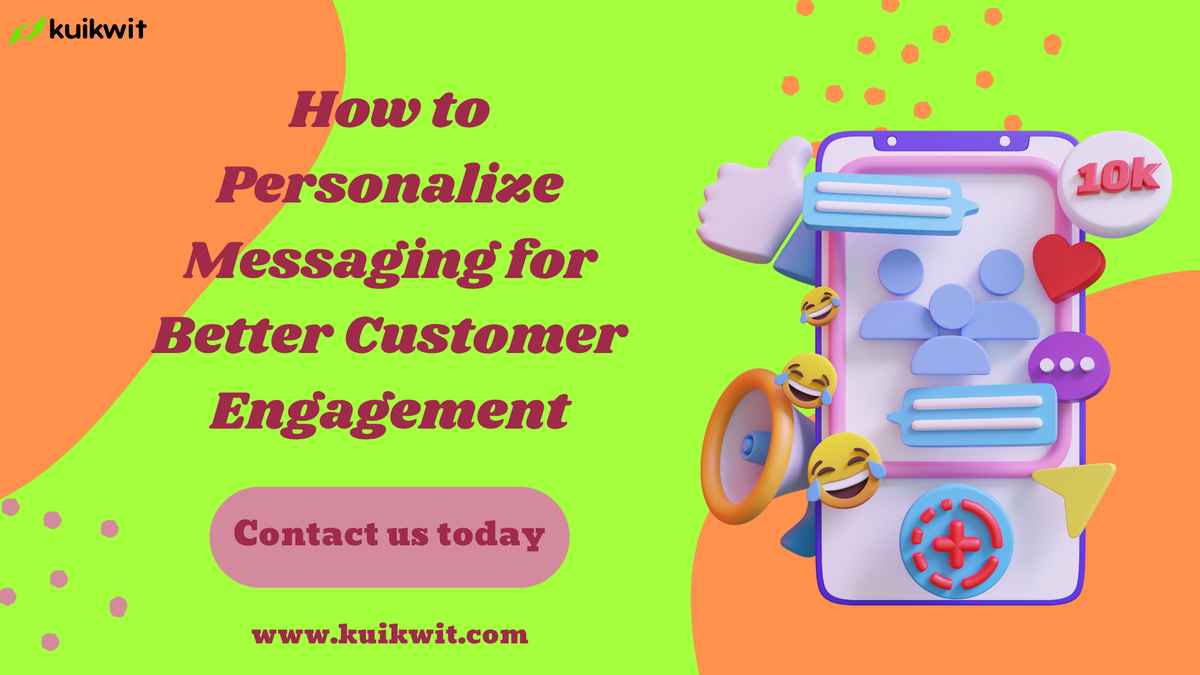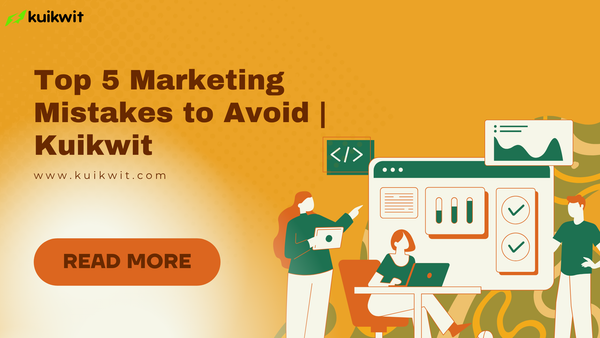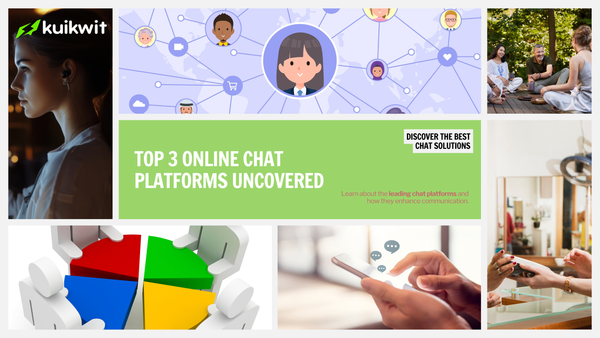How to Personalize Messaging for Better Customer Engagement in 2025
Boost customer engagement with personalized messaging strategies. Learn how to tailor conversations, build trust, and drive results using Kuikwit

In today’s fast-paced digital world, customers crave more than just great products they crave personal connection. The brands that stand out are those that make their customers feel seen, heard, and valued. That’s where personalized messaging comes in.
Whether you’re a small business or a growing brand, learning how to personalize your customer messages can transform your engagement, boost loyalty, and increase sales.
Let’s dive into how you can personalize messaging effectively and why it’s essential for better customer engagement in 2025.
What is Personalized Messaging?
Personalized messaging means tailoring communication to each customer based on their preferences, behavior, and past interactions.
It goes beyond simply addressing someone by their name it’s about delivering relevant, meaningful, and timely messages that match where the customer is in their journey.
Example:
Instead of sending the same generic message to all customers, a coffee shop might send:
“Hey Sarah, your favorite caramel latte is back! Want to grab it today with 20% off?”
This small personal touch makes a massive difference in engagement and loyalty.
Why Personalization Matters in Messaging
According to research, 80% of customers are more likely to buy from a brand that offers personalized experiences.
And with messaging becoming the top channel for customer communication, personalization isn’t just an option it’s a necessity.
Here’s why it matters:
- Increases engagement: Personalized messages get higher open and reply rates.
- Builds trust: Customers feel valued, not marketed to.
- Boosts conversion: Relevant offers lead to quicker purchase decisions.
- Improves retention: When customers feel understood, they stay longer.
The Role of Data in Personalized Messaging
Data is the foundation of effective personalization. Without it, you’re guessing instead of connecting.
Here’s what data helps you understand:
- Customer preferences (products, communication style, timing)
- Purchase history and browsing behavior
- Demographics and location
- Feedback and satisfaction levels
Pro Tip:
Using a platform like Kuikwit your all-in-one messaging hub, you can track and organize all customer conversations in one place. This gives you the insights needed to personalize every message without switching between apps or losing context.
Best Strategies to Personalize Your Messaging
Now that we understand why personalization is vital, let’s explore how to do it effectively.
a. Segment Your Audience
Not all customers are the same. Divide your audience into groups based on factors like:
- Age or location
- Purchase frequency
- Interests or preferences
- Stage in the customer journey
Example: A clothing brand can send different messages to new customers (“Welcome! Here’s 10% off your first order”) and loyal customers (“We appreciate you! Enjoy early access to our new collection”).
b. Use Customer Names and Context
Start your message with the customer’s name and mention something specific to them. It instantly builds rapport and shows genuine attention.
Example:
“Hi James, we noticed you’ve been exploring our new features. Here’s a quick video to help you get started.”
c. Time Your Messages Right
Timing is key to engagement. Sending a personalized message at the right moment like after a purchase, cart abandonment, or subscription renewal increases response and conversion rates.
Example:
“Hi Mia, we saw you left something in your cart! Complete your order today and get free shipping.”
d. Leverage Behaviour-Based Automation
Automate your messaging based on user actions. This allows you to send real-time, relevant messages without manual effort.
Example:
- When a customer downloads your app, send a welcome message.
- If they haven’t engaged for a while, send a reactivation message with a special offer.
Automation tools like Kuikwit help small businesses do this effortlessly across multiple channels from WhatsApp and Instagram to Email and SMS.
e. Offer Personalized Recommendations
Customers love when brands suggest products or services that truly fit their needs. Use data insights to recommend items based on past purchases or browsing behavior.
Example:
“Hi Alex! You loved our summer shirts our new linen collection just dropped. Check them out before they sell out!”
f. Keep it Conversational
Customers respond better to natural, human-like messages rather than robotic scripts. Keep your tone friendly, simple, and relatable.
Example:
Instead of: “Your order has been processed.”
Say: “Hey Sam, your order is on the way! Can’t wait for you to try it.”
g. Don’t Overdo It
Personalization shouldn’t feel invasive. Use data wisely customers appreciate personalization, but they don’t want to feel tracked. Keep the focus on value and experience, not surveillance.
Tools That Make Personalization Easy
You don’t need a massive team or budget to create personalized experiences. Tools like Kuikwit make it possible for small and medium businesses to:
- Manage all messages in one place
- Automate replies based on behavior
- Send personalized campaigns across multiple channels
- Track engagement and response rates
By centralizing communication, you can ensure every customer gets a fast, relevant, and consistent experience, no matter where they message you from.
Real Example: How Personalization Boosts Engagement
Let’s look at a simple case study:
A small online boutique implemented personalized messaging through Kuikwit.
Here’s what changed in 3 months:
- Open rates increased by 45%
- Response rate doubled
- Repeat purchases grew by 30%
The secret? They personalized their customer journey from “Welcome messages” to “Thank you for your purchase” notes.
This shows that personalization isn’t just a buzzword; it’s a measurable business strategy.
Common Mistakes to Avoid
Even great personalization strategies can fall flat if you make these mistakes:
1. Sending irrelevant offers
2. Over-automating (losing the human touch)
3. Using outdated data
4. Ignoring customer feedback
Keep refining your approach by listening to your customers and adapting your messaging accordingly.
The Future of Personalized Messaging
By 2025, messaging personalization will go beyond names and recommendations. With AI and predictive analytics, businesses will anticipate customer needs before they’re even expressed.
Imagine sending a message like:
“Hey Ella, looks like your subscription is about to renew. Want to upgrade to the premium plan for extra benefits?”
That’s not just personalization that’s proactive engagement powered by smart data.
Conclusion
Personalized messaging is the bridge between businesses and meaningful customer relationships. It turns simple interactions into trust, engagement, and long-term loyalty.
By using customer data responsibly, segmenting your audience, and adopting automation tools like Kuikwit your all-in-one messaging hub, you can create experiences that make every customer feel special.
Because at the end of the day, personalization isn’t just about messages
It’s about making your customers feel valued, understood, and connected.




